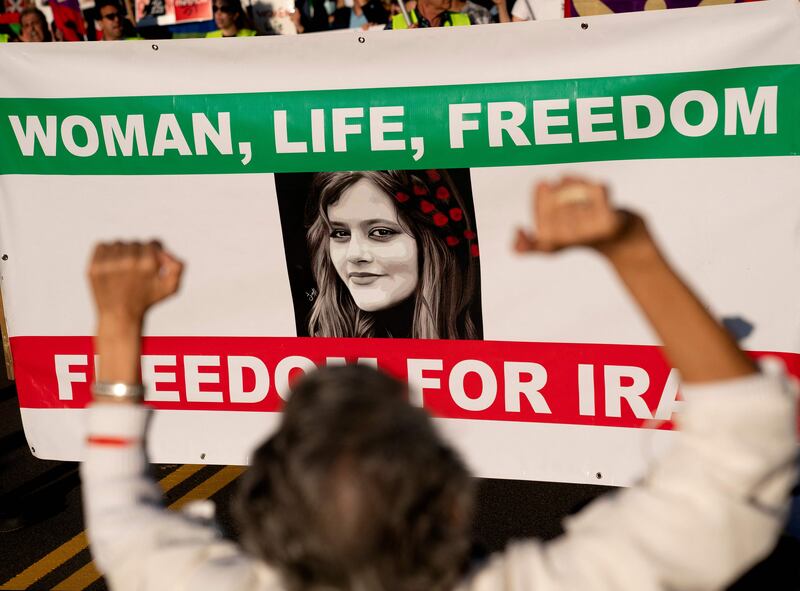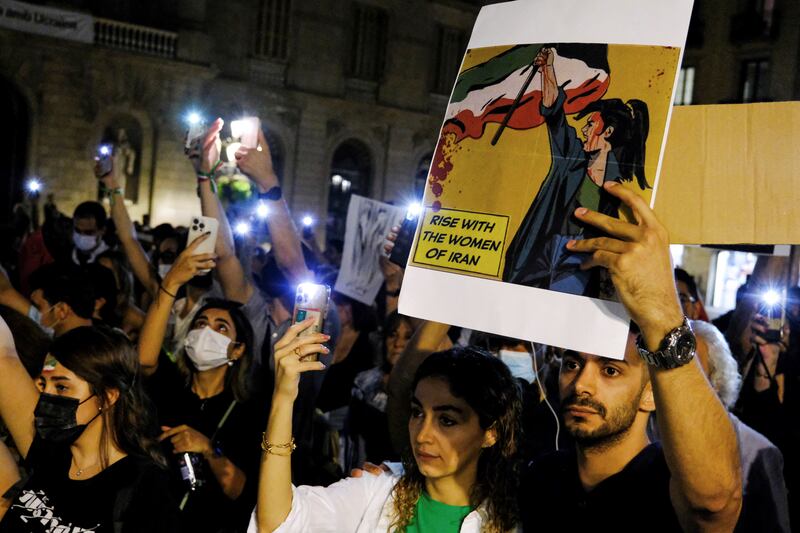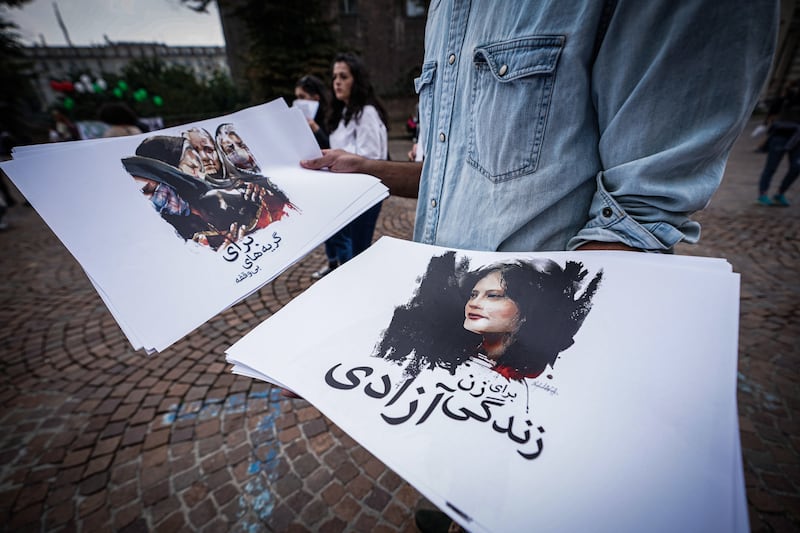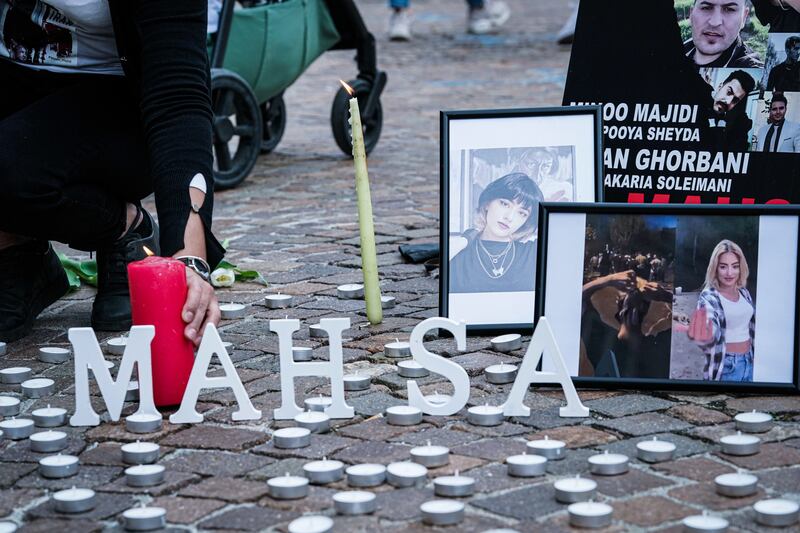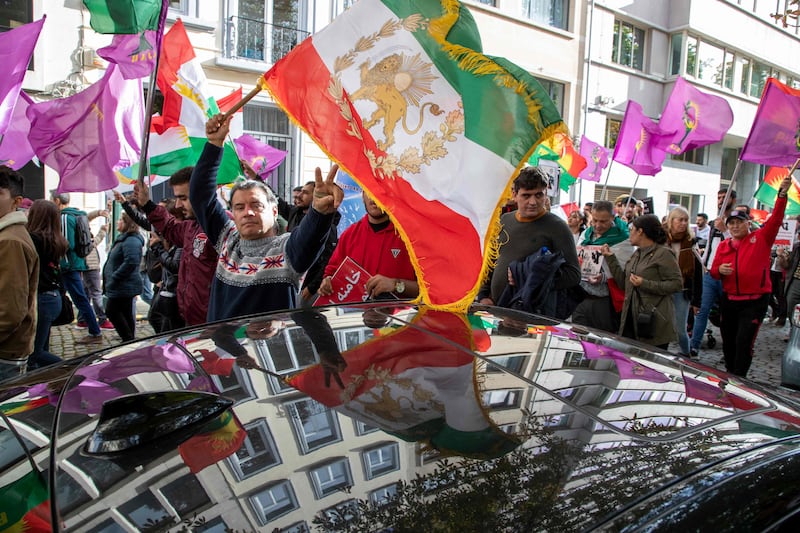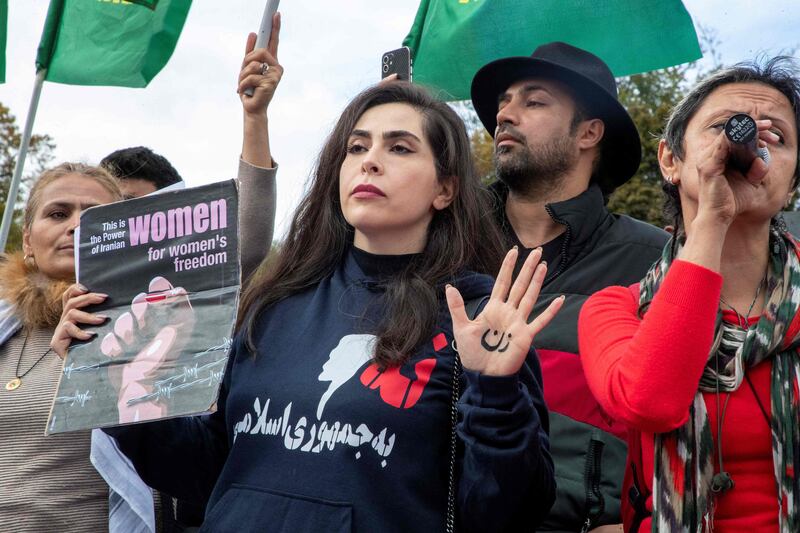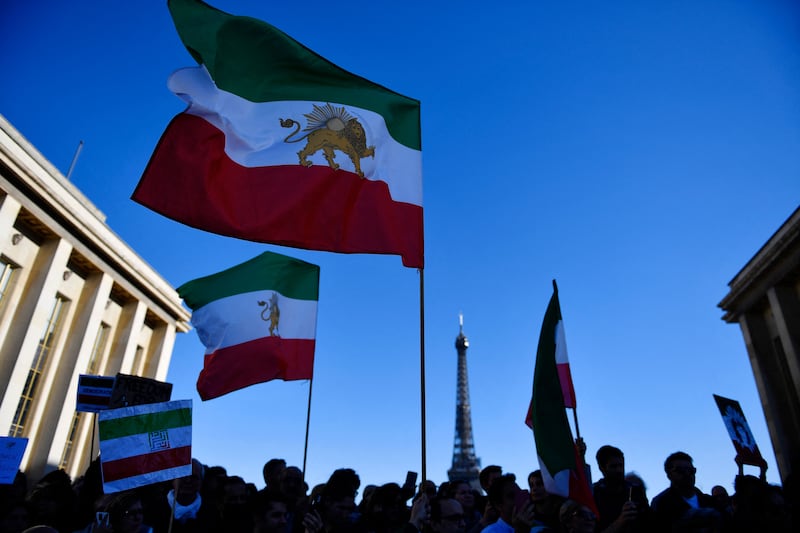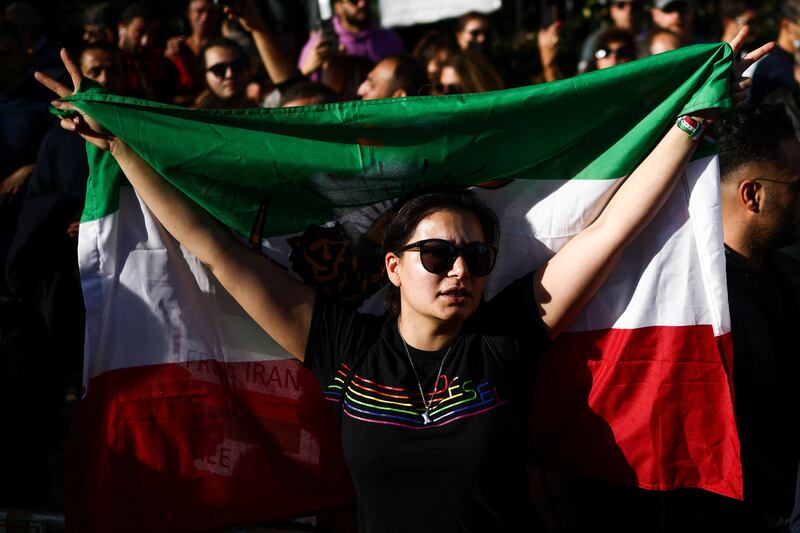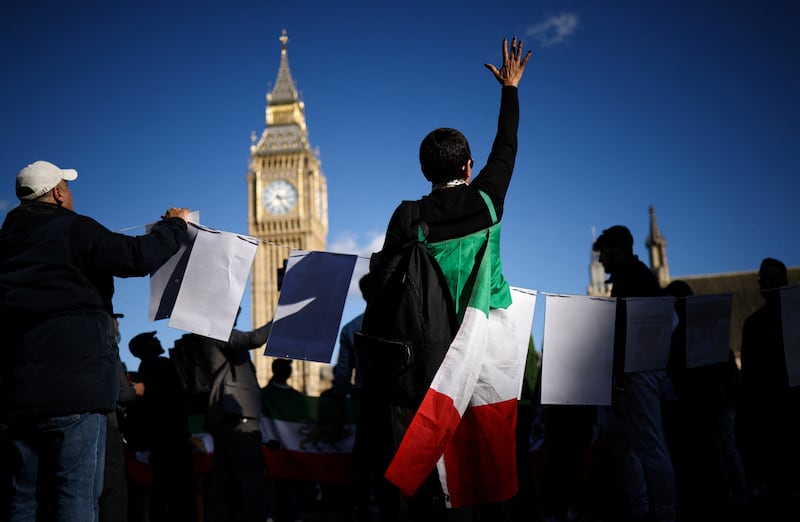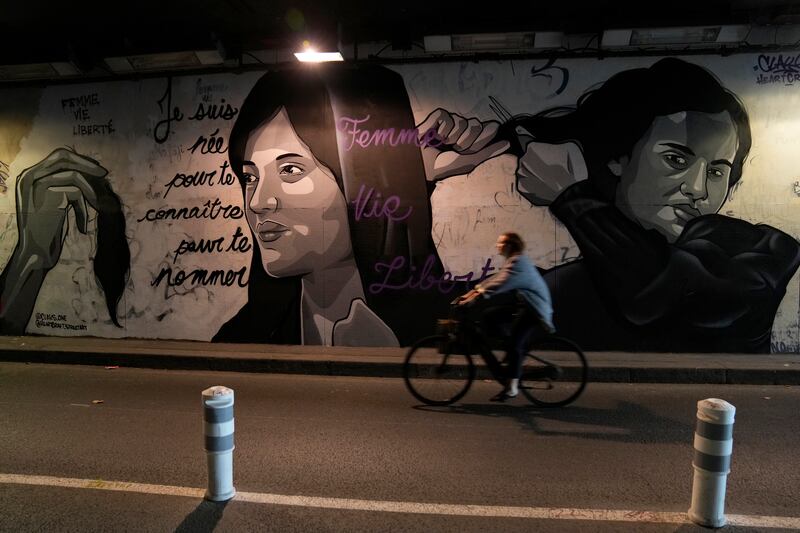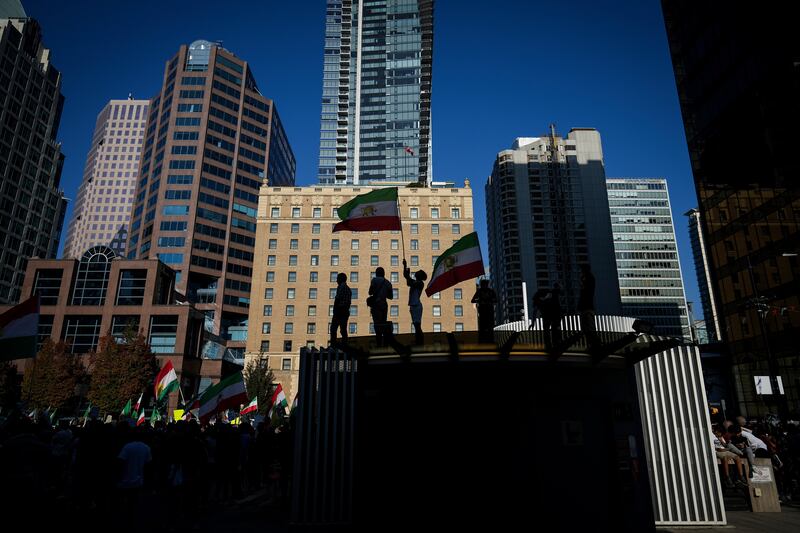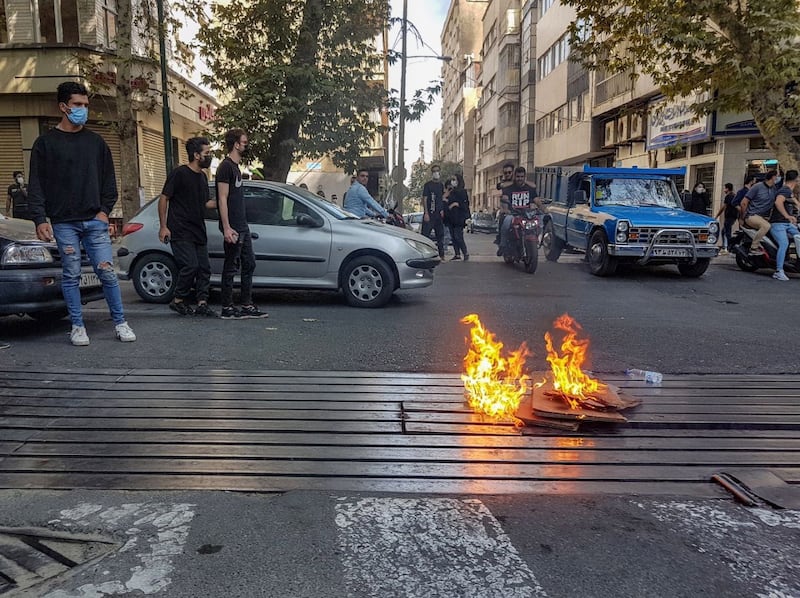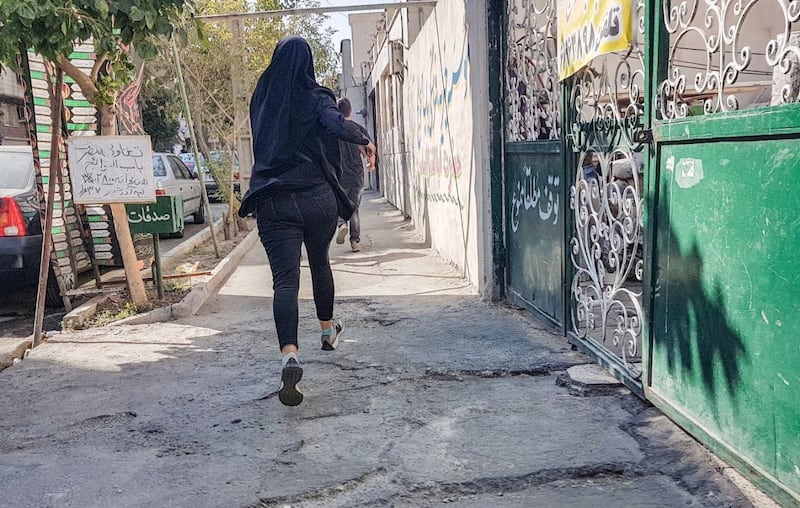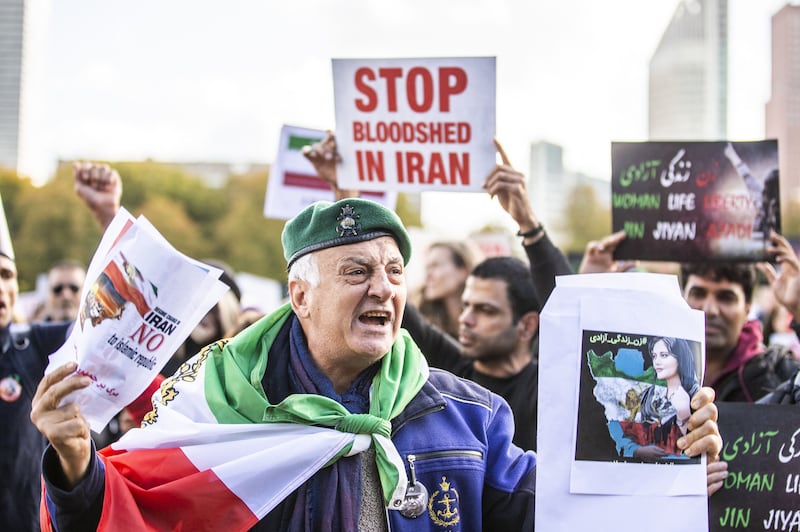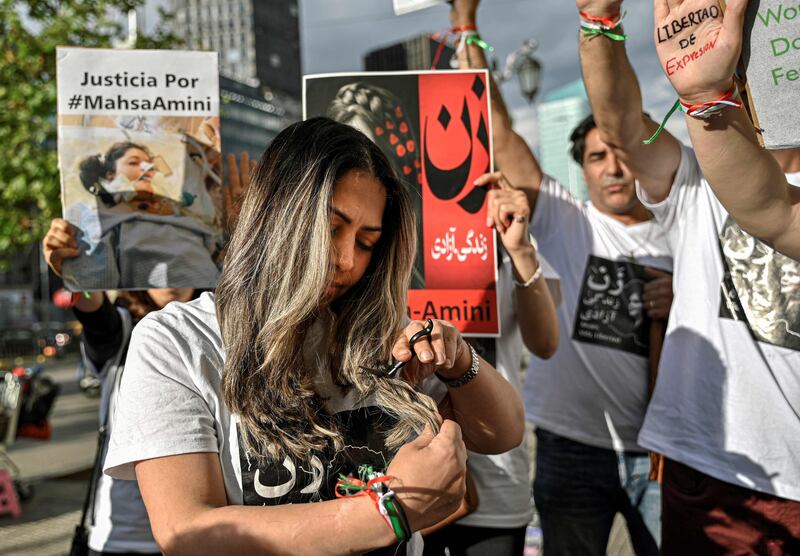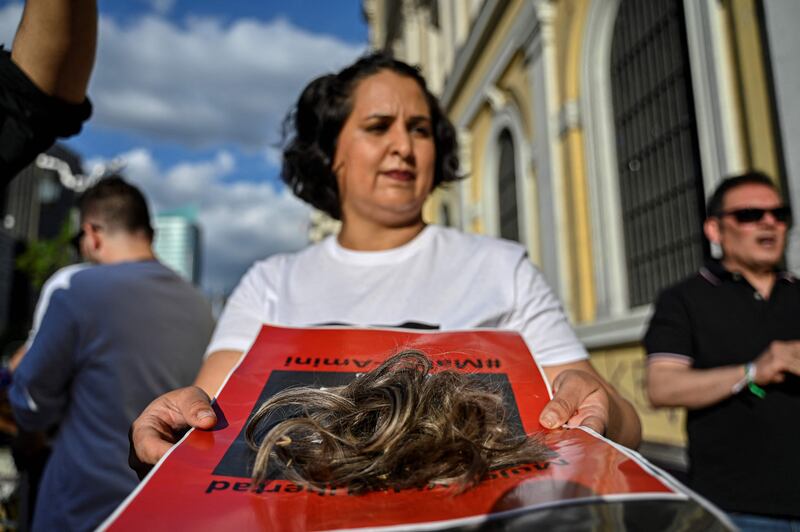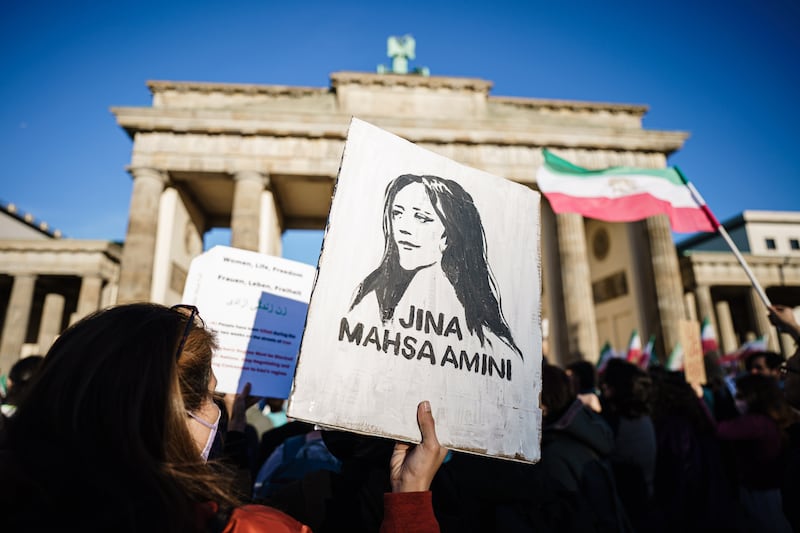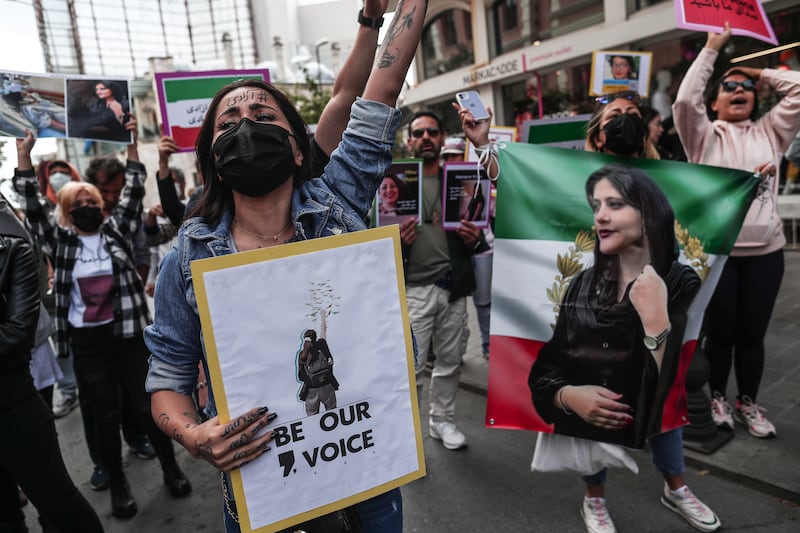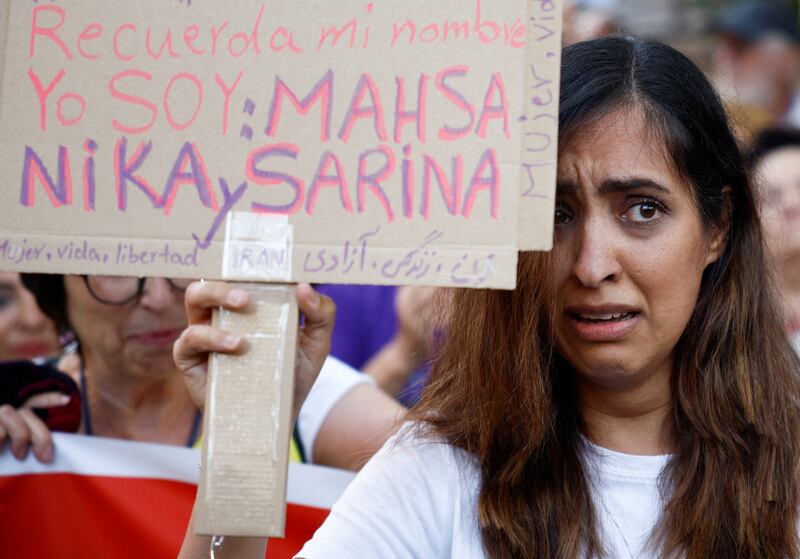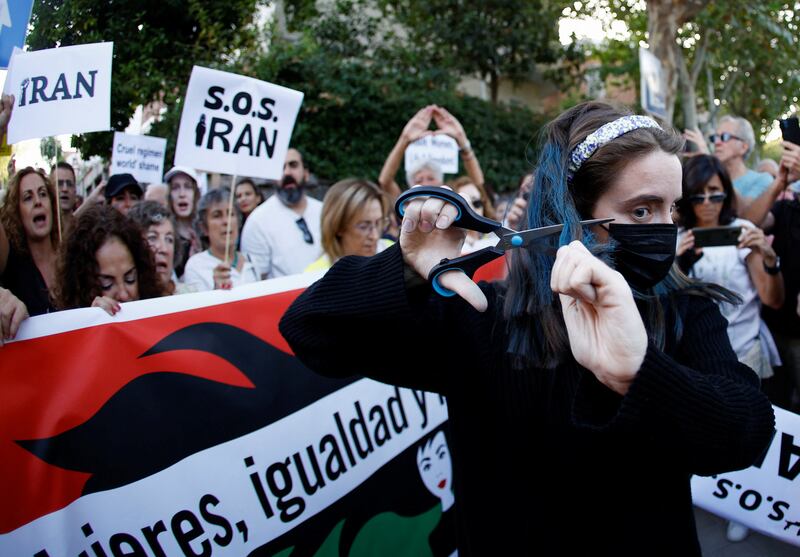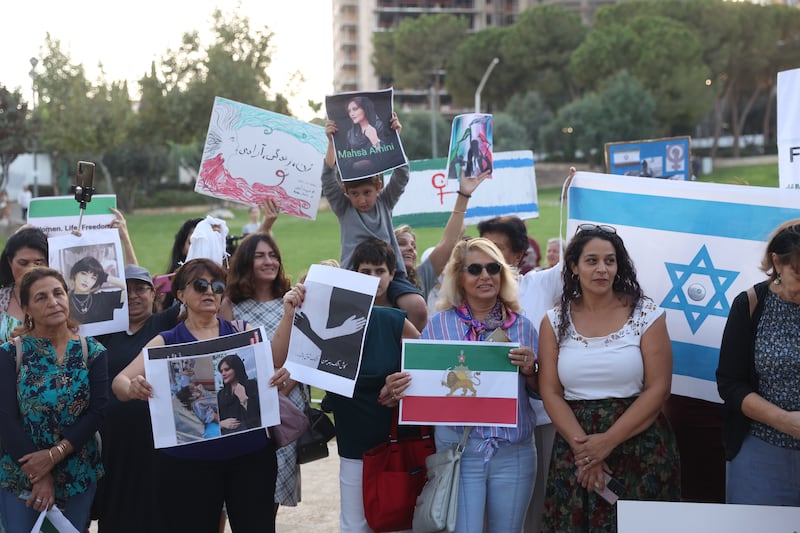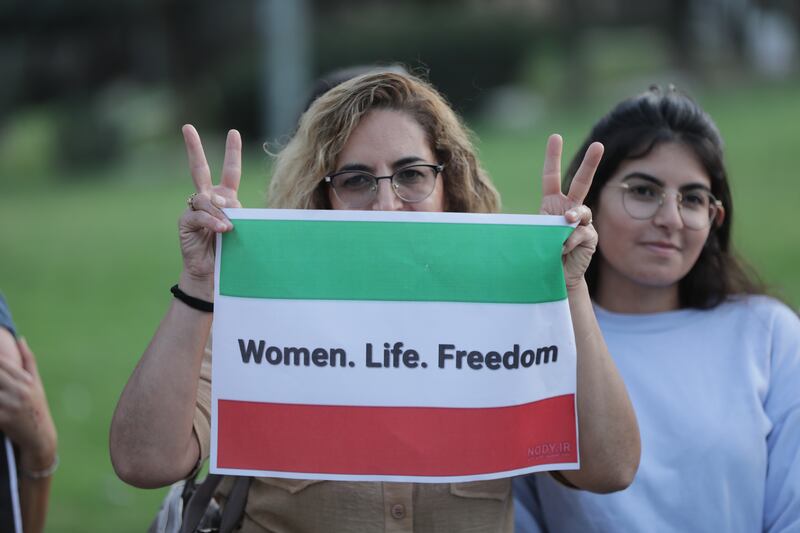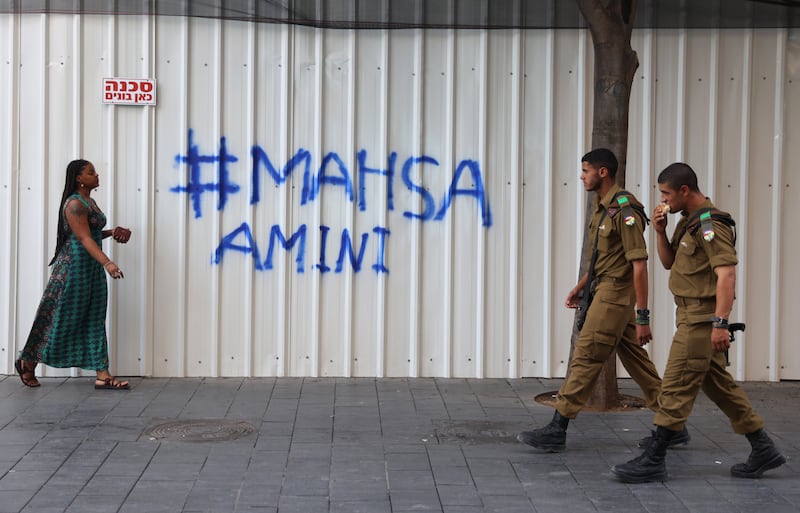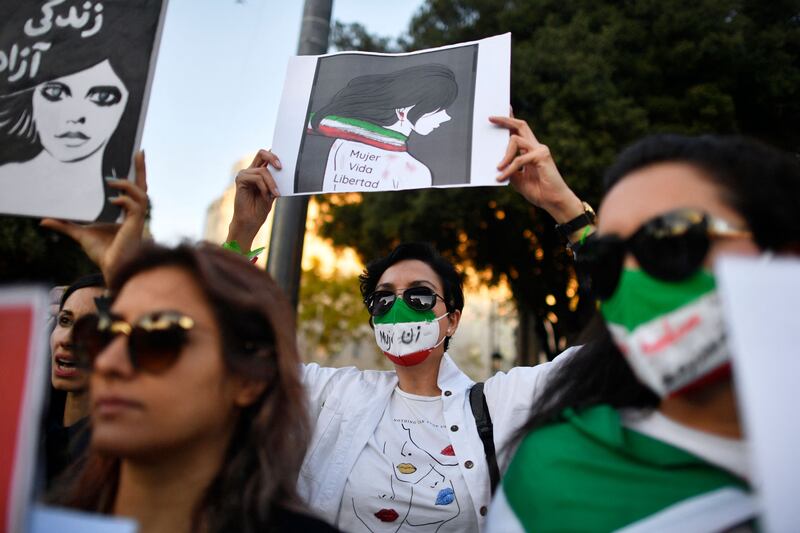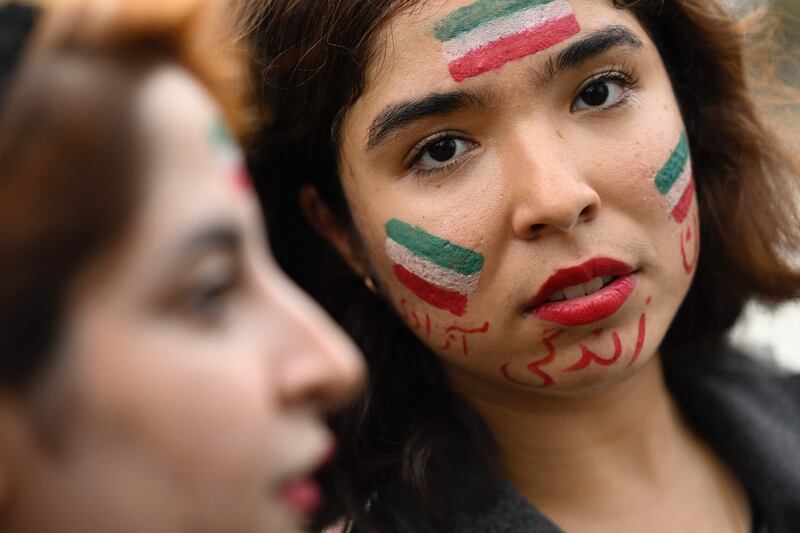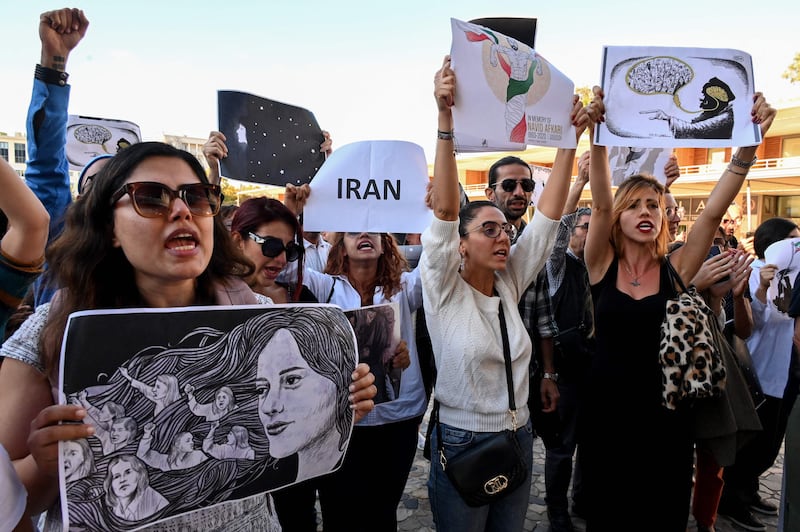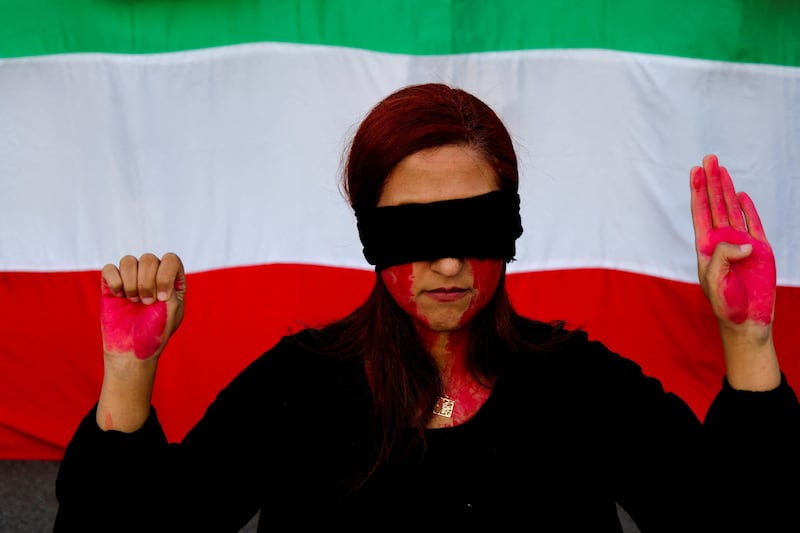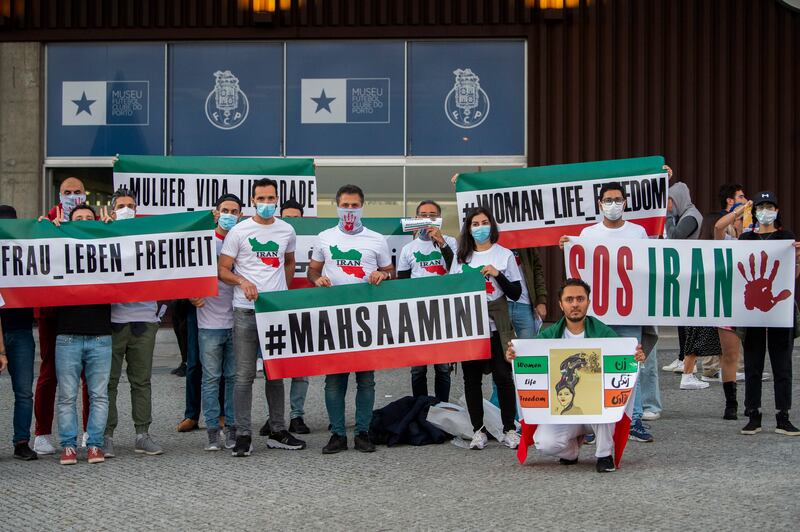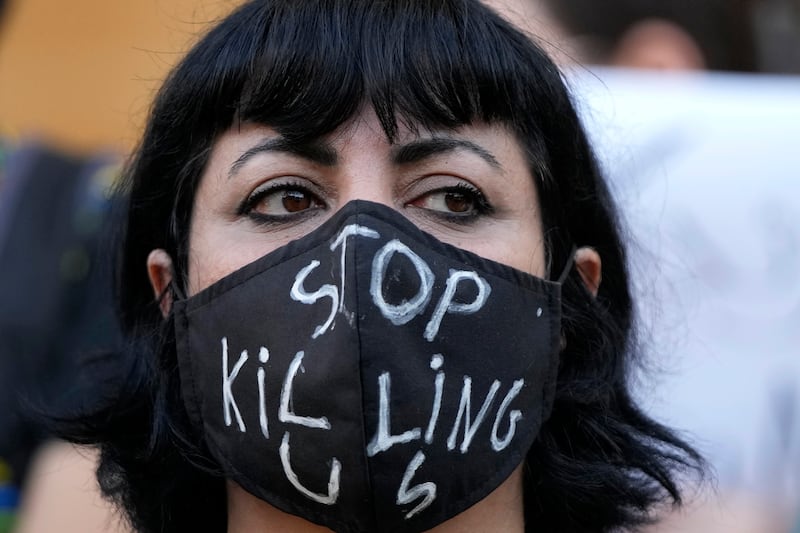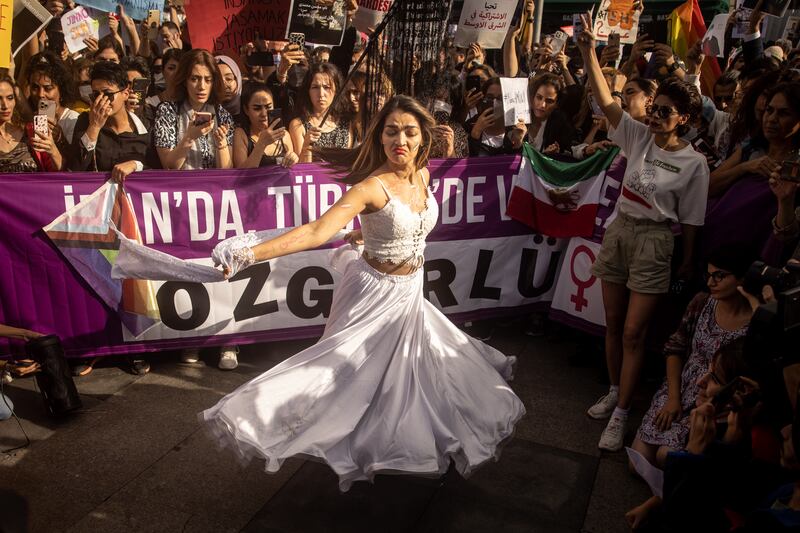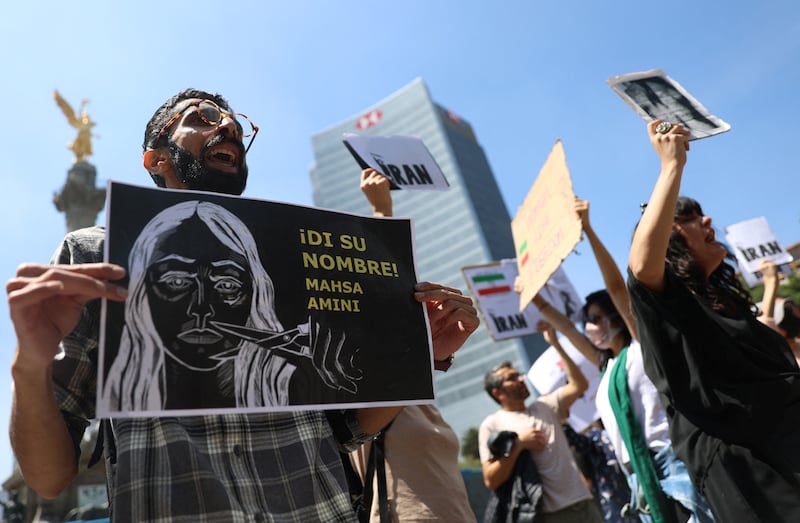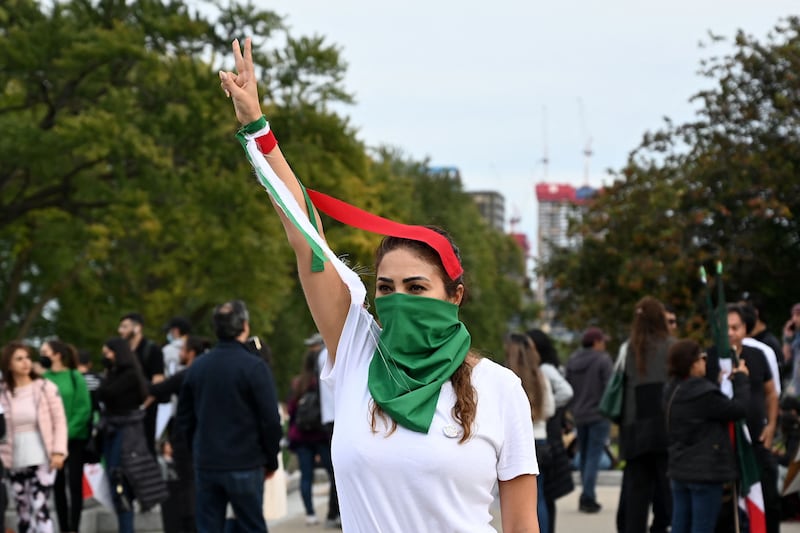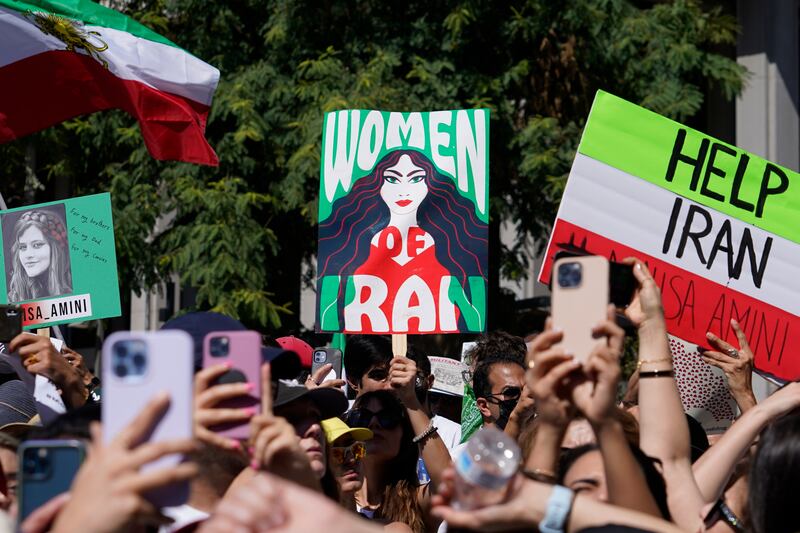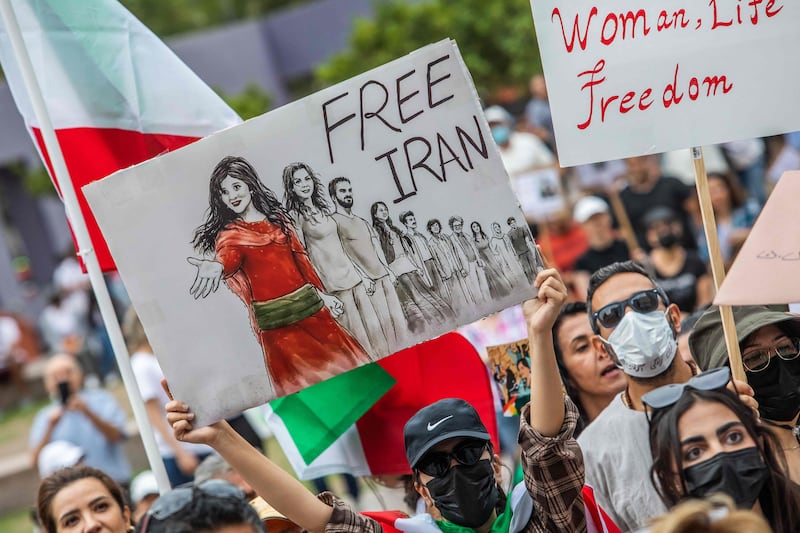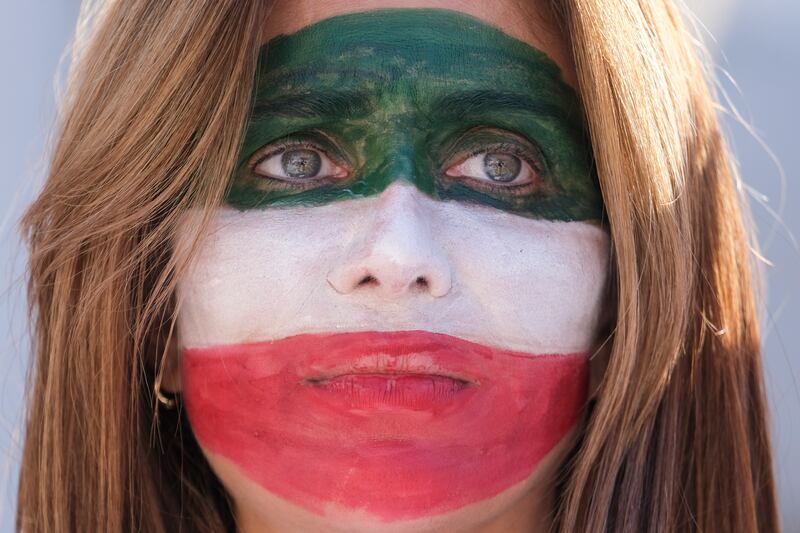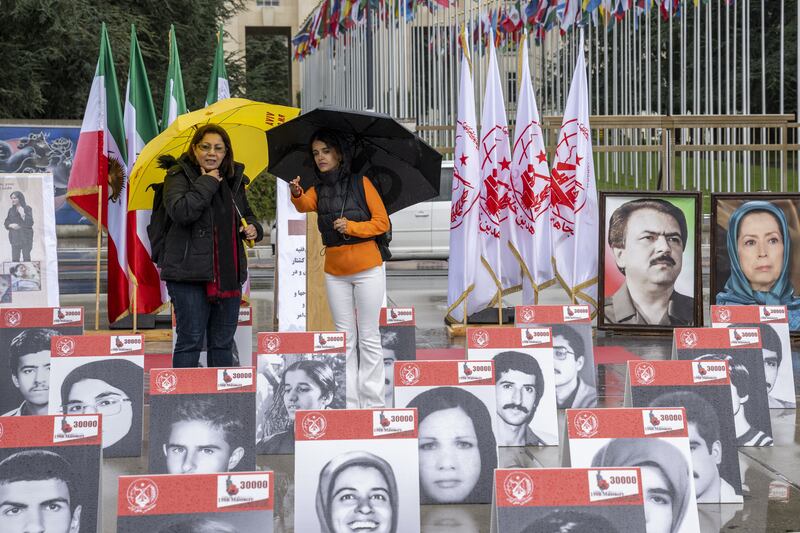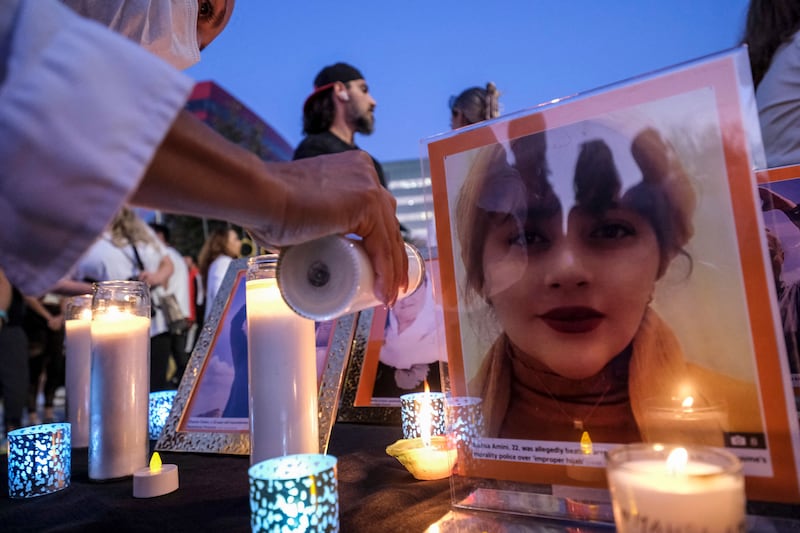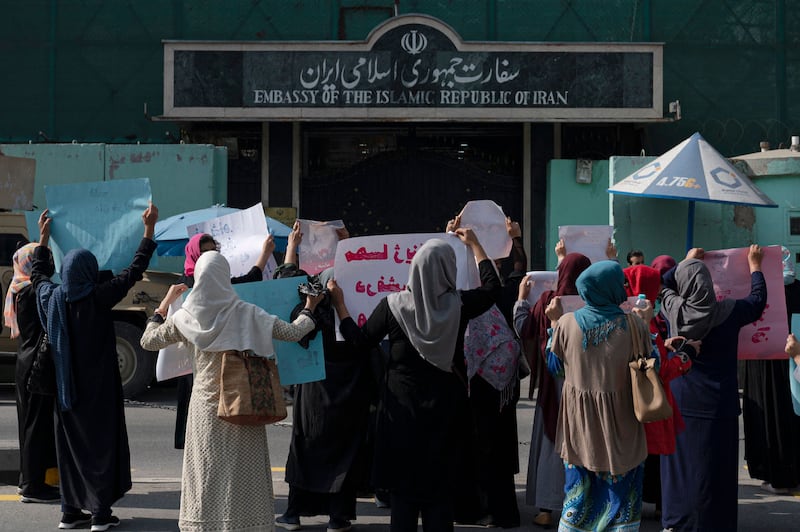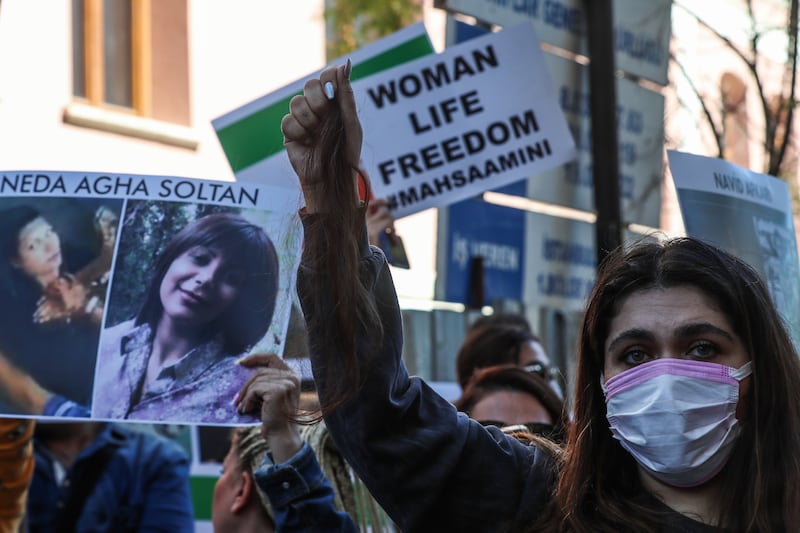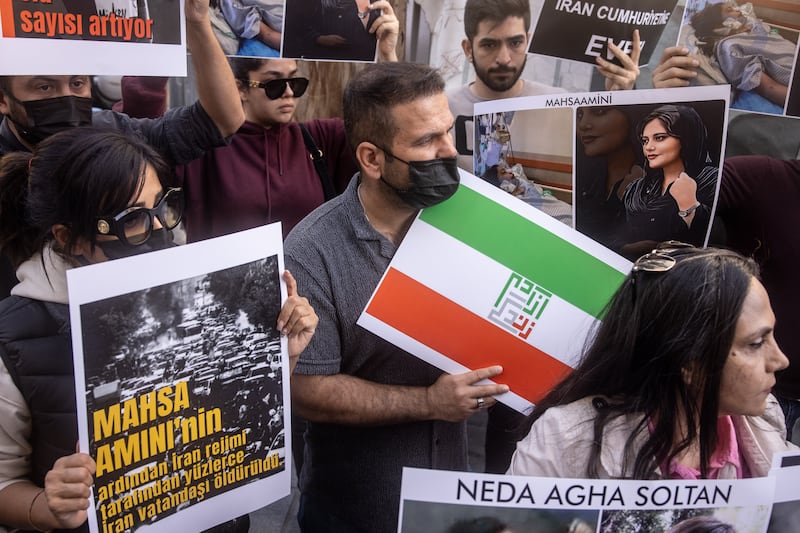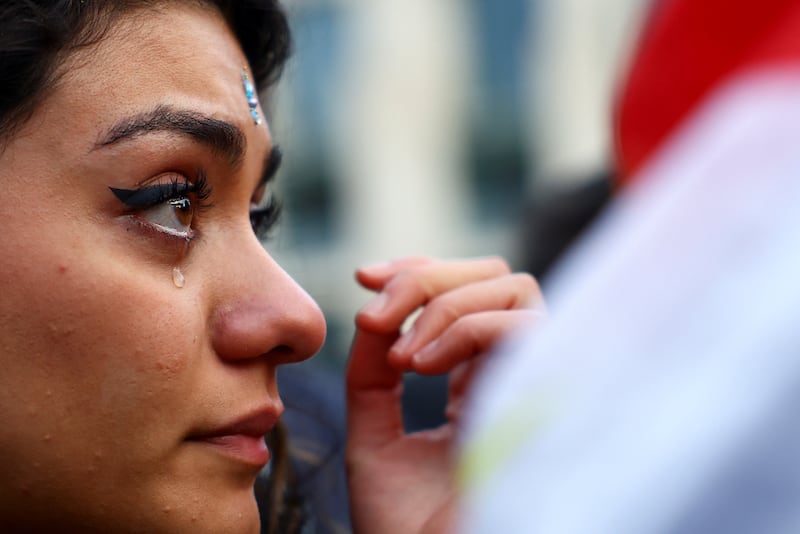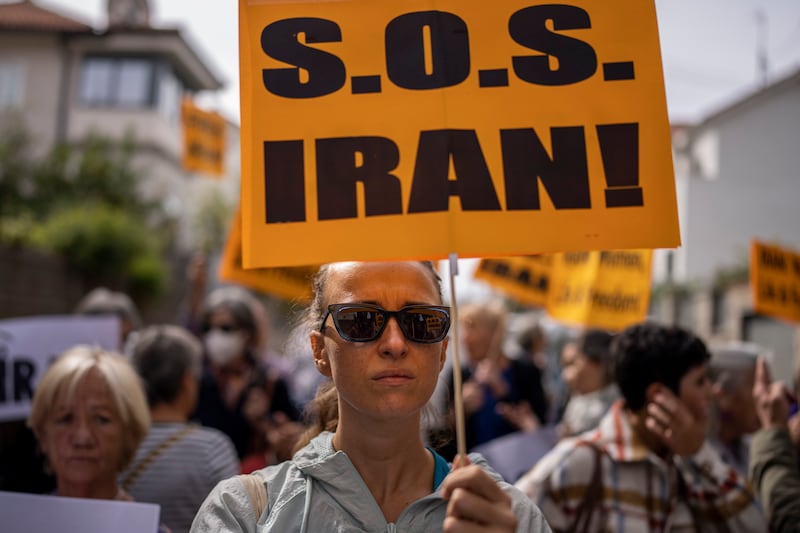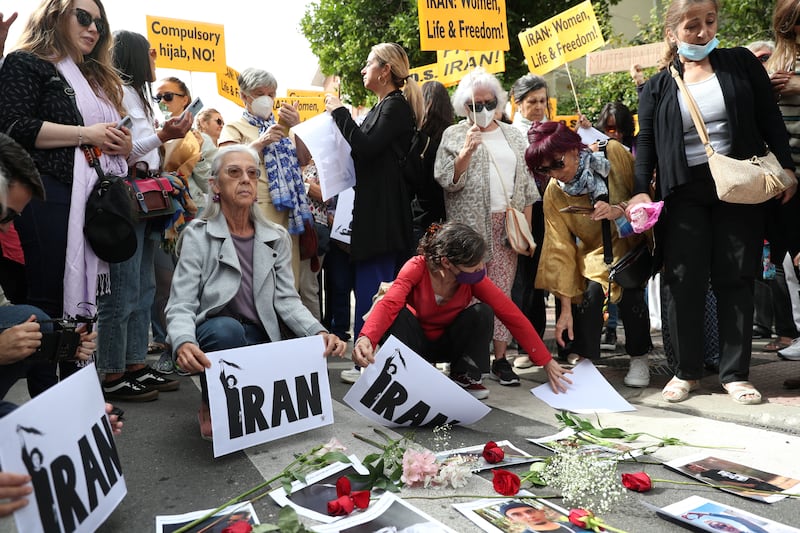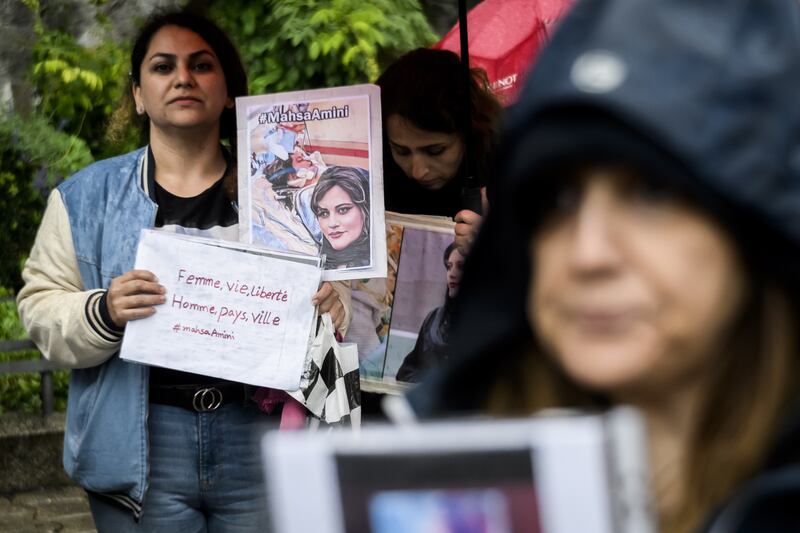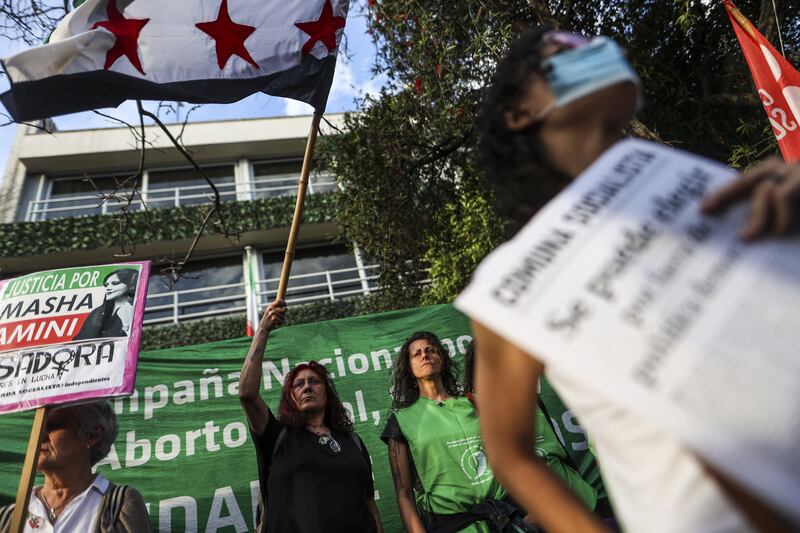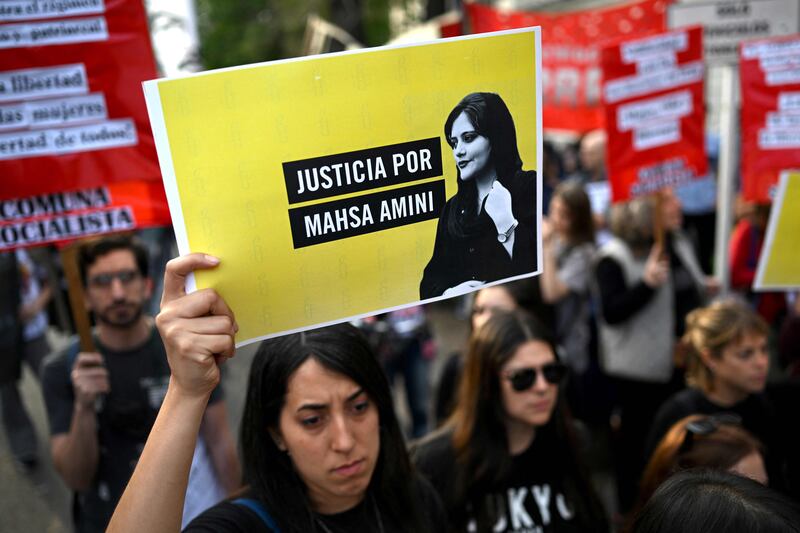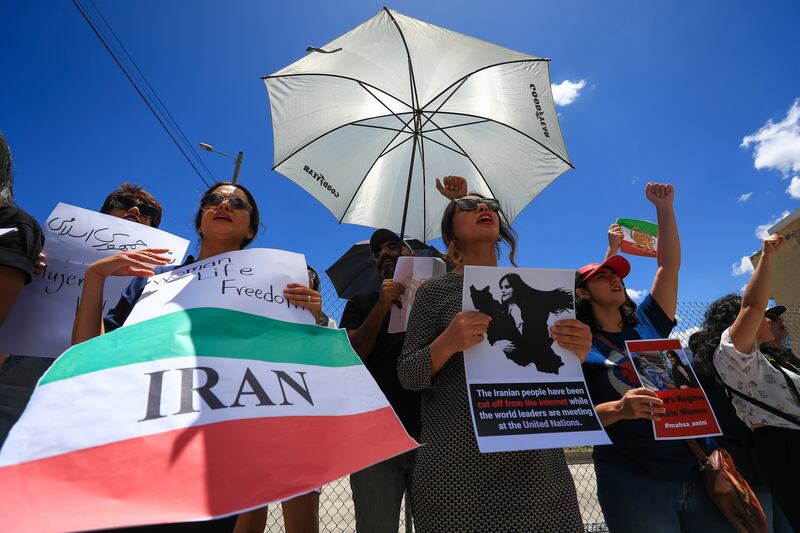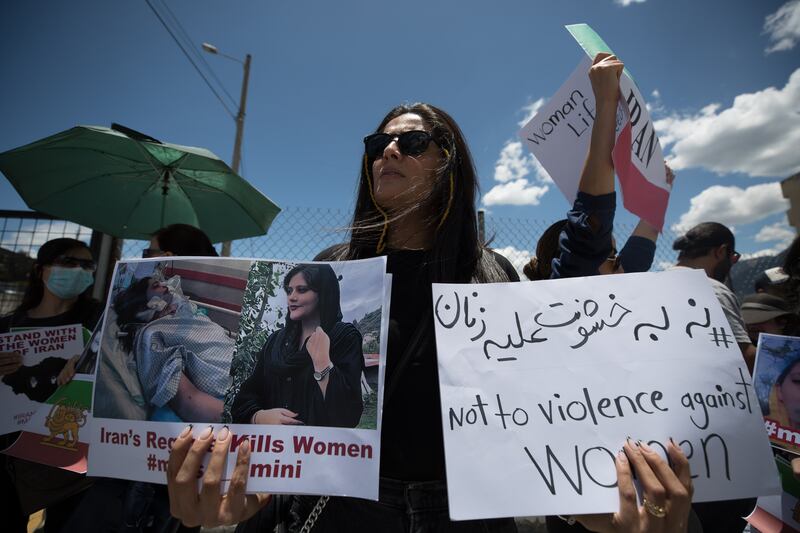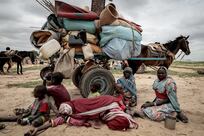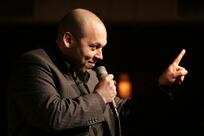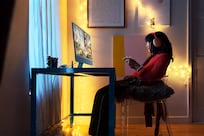An Iranian man has told The National that two of his young nieces were detained for protesting in Qom, a city of significant religious importance.
Ashkan, who asked to be identified by his first name only for fear of reprisal from the Iranian authorities, said a demand to end the compulsory hijab is tied to calls for an end to the Tehran government.
“I saw hundreds of people in the streets, unlike the protests of 2017 and 2019. This time, they are calling for the removal of the regime, and not just the hijab,” Ashkan told The National from outside Iran.
“My two nieces were detained. One of them is 14 years old. She was released that same night. The other is 18 years old. She has been released on a bail of about $30,000.”
Ashkan's nieces, like many others, were protesting against the government's mandatory hijab. He said the demonstrations were not simply about the regime's compulsory dress code for women.
The protests were sparked by the death of Mahsa Amini, 22, in police custody on September 16 for allegedly breaching Iran's strict dress code for women.
Demonstrations were fuelled by the deaths of young protesters including Nika Shakarami, 16, who had been missing for 10 days before her family was informed.
Iran has denied that Amini was killed in a beating and ordered a “full investigation” into the circumstances of her death.
At least 201 people, including 23 children, have been killed since the protests began, Oslo-based Iran Human Rights said.
“Children have a legal right to protest,” IHR director Mahmood Amiry-Moghaddam said on Wednesday. “The United Nations has an obligation to defend children’s rights in Iran by applying pressure on the Islamic republic.”
Internet monitoring platform Netblocks reported "major disruption" to the network in Iran from around 9.30am local time as protests raged on.
Protesters were seen burning images of Iran's supreme leader, Ayatollah Ali Khamenei.
“They are mostly students from high schools and universities. We can't distinguish between the demand for the end of the compulsory hijab and the removal of the regime. There's a big tie between the two. People understand that without being against the government, we can't get rid of the compulsory hijab,” Ashkan said.
He said he came from a religious family with women who, themselves, wear the hijab out of choice not out of compulsion, but they chose to take to the streets anyway.
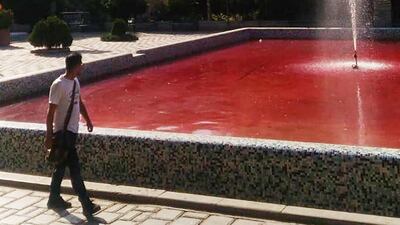
He also said it was too late to quell demonstrations with reforms.
“In my view, it's too late for bringing that kind of freedom to society. If it was in the last two decades, that might have been enough — but now, protesters are not satisfied with just making the hijab non-compulsory.”
Mahsa Amini's death
On Monday, Iran's High Council for Human Rights released a report determining the “real cause” of Amini's death.
“After undergoing craniopharyngioma surgery to remove a brain tumour at the age of 8, the deceased developed a disorder in the important hypothalamus-pituitary axis and the glands under its command, including adrenal and thyroid,” the report read.
“It should be noted that on the strength of hospital medical documents, the examination of CT scan of the brain and lungs, the results of physical examination of the body and autopsy as well as pathology tests, death was not caused by blows to the head or any vital organs and parts of the body.”
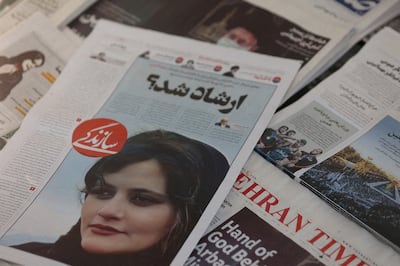
Amini's father told BBC Persian that the documents released by the Iranian authorities to support their version of events on Amini's pre-existing conditions are bogus.
“All of the documents the authorities are showing are fake. They are lying. Mahsa did not have any issues. She only had minor issues to remove an under-skin cyst from her left eye 15 years ago. I don't know how they come up with these lies. I reject them all,” he said.
“My daughter was beaten and that's the reason she died.”
He also said if the authorities had been truthful, they would have let the family see Mahsa's body one last time before her burial.
